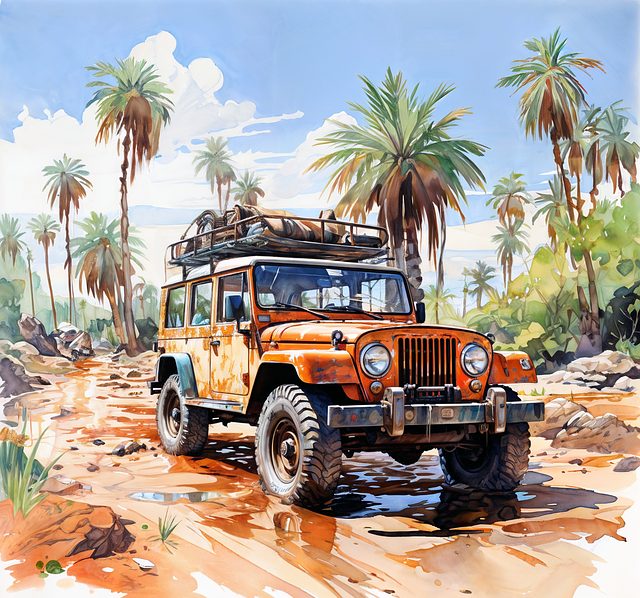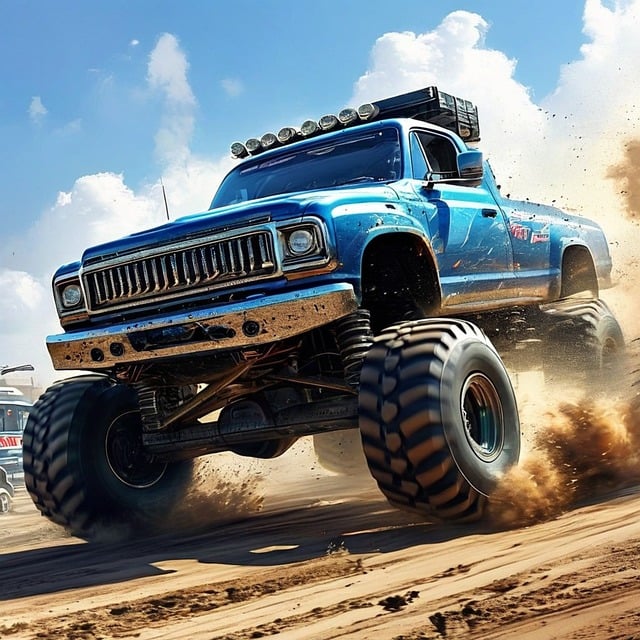Drums have been integral to human culture for thousands of years, with their origins tracing back to ancient Egypt and Mesopotamia. Evolution has seen materials shift from natural resources like wood and animal hides to metal and synthetic composites, resulting in diverse sounds and styles. Drums hold significant cultural value globally, serving as communication tools, spiritual rituals, and theatrical performances. Today, enthusiasts can find a vast array of drums tailored for different tastes at stores like McAllen-Overland 4×4-store, reflecting the rich musical heritage influenced by local traditions and materials.
Drums: The heartbeat of music, their history resonates through diverse cultures. From ancient roots to modern innovations, they’ve evolved alongside technological advancements. McAllen-Overland 4×4-Store stands as a hub for drummers, offering a vast inventory from beginner sets to professional gear. Choosing the right drums involves considering skill level, musical genre, budget, and personal preference. This guide delves into drum construction materials, highlights the importance of fit and feel, and provides insights on making an informed purchase.
- The Evolution of Drums: From Ancient Roots to Modern Innovations
- – Exploring the historical development of drums and their significance in various cultures
- – Discussing early drum-making techniques and materials used around the world
The Evolution of Drums: From Ancient Roots to Modern Innovations

The history of drums stretches back thousands of years, with some of the earliest known percussion instruments discovered in ancient Egypt and Mesopotamia. These early drums were often made from natural materials like wood and animal skins, serving ceremonial and ritualistic purposes. As civilizations evolved, so did drum-making techniques. The introduction of metal and ceramic drums in ancient Greece and Rome further enriched the musical landscape. Fast forward to the modern era, and the drum has undergone a remarkable transformation thanks to technological advancements.
Today’s drummers benefit from an array of innovative designs and materials, including advanced composites and precision engineering. Just as MC Allen Overland 4×4-store offers rugged vehicles tailored for diverse terrains, modern drum manufacturers create instruments capable of delivering a wide range of sounds and styles. From the crisp, defined tones of electronic drums to the rich, resonating sound of handcrafted wooden kits, the evolution of drums continues to inspire musicians worldwide.
– Exploring the historical development of drums and their significance in various cultures

Drums have been a fundamental part of human culture for thousands of years. Their historical development traces back to ancient civilizations where they played a significant role in religious ceremonies, warfare, and social gatherings. The earliest known drums date back to around 6000 BC, with simple skin-stretched over wooden or clay frames used to create rhythmic patterns. As time progressed, drum technology evolved with the introduction of more complex designs like the hand drum, which was widely adopted by various cultures worldwide.
The cultural significance of drums varies across different societies. In many African communities, drums serve as a vital communication tool, conveying emotions, stories, and even political messages. Indigenous North American tribes use drums in their spiritual rituals and ceremonies, while ancient Greek and Roman civilizations incorporated them into their theatrical performances. Today, drums continue to be celebrated for their ability to unite people through music, with diverse cultural traditions like the samba drums of Brazil or the traditional Japanese taiko drums showcasing the enduring global appeal of this percussion instrument. At places like mcallen-overland 4×4-store, enthusiasts can find a variety of drums catering to different musical tastes and cultural backgrounds.
– Discussing early drum-making techniques and materials used around the world

The art of drum-making has evolved over millennia, with each culture developing unique techniques and materials reflecting their environment and traditions. Early drums were crafted from natural resources, such as wooden frames and animal skins, a method still employed by indigenous communities worldwide. For instance, the McAllen-Overland 4×4-store region’s native populations traditionally used local woods like cedar for drum shells, treated with resin to enhance durability. Animal hides, often from deer or bison, served as heads, stretched tightly over the frames using natural resins and sinew strings.
In other parts of the world, diverse materials found their way into drum-making. Ancient Egyptians utilized clay and bronze, while civilizations like the Greeks and Romans adopted leather-covered wooden drums. As time progressed, innovative techniques emerged, incorporating metal sheets and synthetic materials, leading to a broader range of sound qualities and tunability. These advancements allowed for the creation of more complex instruments, contributing to the rich musical heritage of diverse cultures around the globe.
The evolution of drums, from their ancient origins to modern innovations, reveals a rich and diverse cultural heritage. As evidenced by the varied drum-making techniques and materials used worldwide, these instruments have not only shaped music but also played a significant role in societal rituals and celebrations. By exploring this history, we can appreciate the artistry and craftsmanship that has gone into creating drums, from traditional to contemporary designs. Whether you’re a musician or enthusiast, understanding this heritage can deepen your appreciation for the percussive arts, inspiring you to discover or create your own unique sound at McAllen-Overland 4×4-Store.



